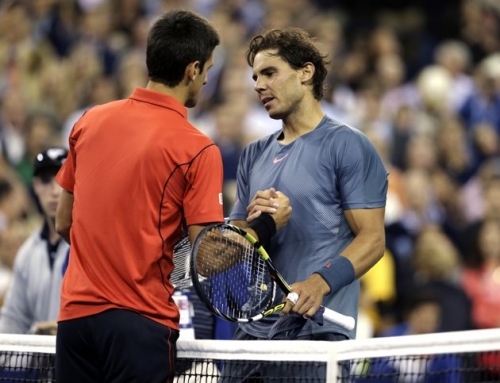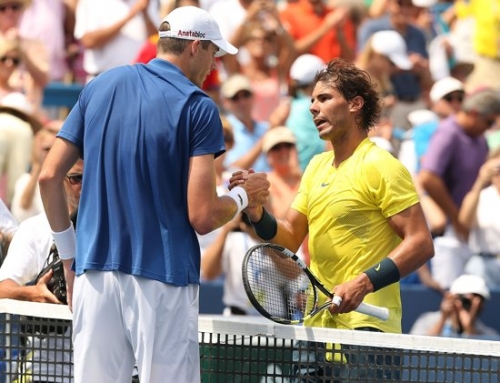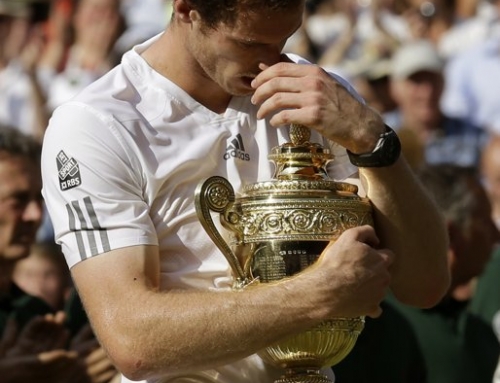 This isn’t the final most people had hoped for, but it was the one that many people expected. The question, for most, was whether Roger Federer would be in the finals with Novak Djokovic, or would it be Andy Murray.
This isn’t the final most people had hoped for, but it was the one that many people expected. The question, for most, was whether Roger Federer would be in the finals with Novak Djokovic, or would it be Andy Murray.
Now that Murray is the one to face Novak Djokovic, we can ask: can he beat Djokovic.
For a variety of reasons, Djokovic is favored to win his third consecutive Australian Open. Let’s go over the reasons why.
Djokovic is number 1
2011 was a very good year for Novak Djokovic. All the problems Djokovic had had to that point seemed to be addressed. He found ways to beat Rafael Nadal, even on clay. He went on a gluten-free diet which seems to have addressed his most pressing problem: endurance in hot matches. Djokovic had routinely defaulted whenever the match got too long or too hot. But 2011 and 2012 showed a new Djokovic who could play long matches without wilting.
Nowhere was this more evident than last year’s Australian Open semifinal and final when Djokovic followed up the 5 hour semifinal encounter with Andy Murray with a 6 hour final with Rafael Nadal looking none the worse for wear.
2012 would not be nearly as successful for Djokovic as 2011. He won one Slam, not 3. He found it tough to beat Nadal on clay losing three encounters with the Spaniard. Even so, he showed he was the best on hard courts, the US Open final not withstanding. He beat Roger Federer in the year-end championship.
Djokovic won handily against Berdych and Ferrer
Djokovic had a 5-setter against Stan Wawrinka in the fourth round. He came back and took care of Berdych and Ferrer in four sets and straight sets respectively. Indeed, he demolished Ferrer, who could find nothing to intimidate Djokovic.
Indeed, Djokovic has become more Nadal-like with age, being able to chase down shots, absorb pace, and redirect to within a dime. To be fair, Djokovic’s record against Berdych and Ferrer is amazing, and to expect anything but a routine victory is to be a bit delusional.
Murray just came off a four hour five-setter
Djokovic had the advantage of starting on the first day. Because the Australian Open splits the top and bottom half on the draw on alternate days, one semifinal is played a day earlier than the other. In this case, Djokovic played his relatively straightforward semifinal a day earlier than Murray played Federer. The Australian Open at least puts a day of rest for both semifinalists.
Now it’s not like a long five-setter has prevented the player playing on Friday from winning. It’s happened twice in recent memory. Last year, Novak Djokovic beat Andy Murray in 5 sets on the Friday before the Sunday final before beating Rafael Nadal in 5 sets in the final. In 2009, Rafael Nadal played a 5 setter against Fernando Verdasco in the semis, then 2 days later, faced Roger Federer in the final, which he won in 5 sets.
All things considered, Murray was pushed maybe 40 minutes longer to complete his match against Federer, having to play a tiebreak and a 30 minute fifth set to win when he couldn’t serve out the match.
Djokovic has won the previous two encounters with Murray
Although Murray did beat Djokovic in the US Open final, he had one advantage. It was windy. Djokovic showed the wind wreaked havoc with his game. Had Djokovic been forced to finish his semifinal against David Ferrer in last year’s US Open semifinal, Ferrer would likely have made it to the finals as he was adjusting better to the wind. Murray adjusted better for two sets, but as the winds settled some, Djokovic came back and took sets 3 and 4. Murray finally played a solid fifth set to take his first Slam.
However, the two met again twice. They met in Shanghai which was less windy than the US Open, and while Murray had chances to win the match including match points, he couldn’t convert, then cramped in the third set, letting Djokovic secure the victory. The two met again in round-robin play during the year-end championship and Djokovic again won in 3 sets.
What are Murray’s chances?
The good news, such as it is, is that Murray did play Djokovic close the last two times they met, and even had match points in one of the encounters. He’s clearly capable of staying even with Djokovic.
While Murray’s style has leaned more to imitating Federer, that is, playing shorter, more aggressive points, Djokovic’s style has leaned more to Nadal, preferring longer rallies. Djokovic is a more precise player, and Murray the more offensive player. Murray has to serve well to stay even. He’s not facing Federer, however, whose return is a little suspect partly because he stands so close in to receive serve. Djokovic, in the meanwhile, returns a lot better than Federer. Even so, a good serve should still help.
Second, Murray will want to attack Djokovic’s second serve to pressure his first serve. He has to be careful. While Federer has often lost to Djokovic by overplaying shots and not being patient enough, Murray will need to show some patience and look for chances to play bigger shots. Wawrinka benefited from Djokovic being a bit off his game, making uncharacteristic errors early in the match. Murray will have to hope Djokovic also plays subpar without himself running into problems.
So can Murray win? Yes, he certainly can. However, based on form, Djokovic is still favored.




![[US Open Men’s Final] Can Djokovic beat Nadal in the finals?](https://www.essentialtennis.com/wp-content/uploads/2013/09/20130909djokovic-500x383.jpg)


![[French Open] The tactics of the Djokovic-Nadal semifinals](https://www.essentialtennis.com/wp-content/uploads/2013/06/20130607nole-500x383.jpg)